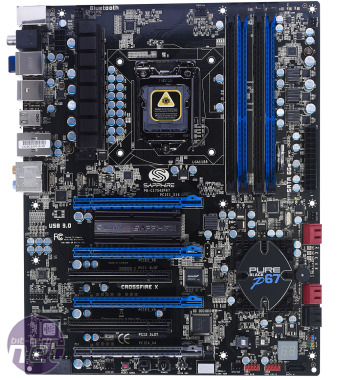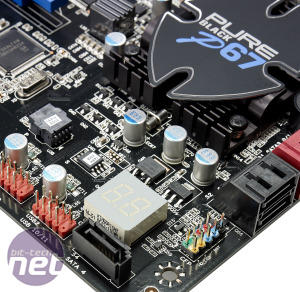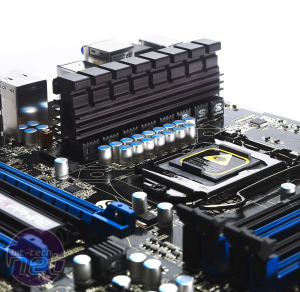Sapphire Pure Black P67 Review
Manufacturer: SapphireUK price (as reviewed): £167.98 (inc VAT)
US price (as reviewed): $229.99 (ex tax)
Sapphire is best known for its graphics cards, but the company has been continually plugging away at the motherboard market for a while now too. The company hasn't always enjoyed massive amounts of success in this area though; the Sapphire Pure Black X58 priced itself out of contention, for example, and previous boards, while having a distinctive appearance, have rarely had performance to match. We’re told that the company is trying to change this situation, however, and is putting more time and effort into its boards.
It’s from this new focus that the Pure Black P67 Hydra springs - a board which, as canny readers should already be able to tell, sports Lucid’s Hydra chip.
We’ve been pretty damning of Lucid Hydra in the past as, while Lucid's claim that it enables cross-vendor multi-GPU setups sounds great on paper, it's been far from simple in practice.
The service and associated program has been infuriatingly complex and incredibly reliant on driver support, and we’ve also seen extremely poor performance results when using mixed GeForce and Radeon multi-GPU setups via the Hydra chip.
It’s a bizarre inclusion then, and one that very, very few people are likely to use - it's only useful if you intend to deploy a multi-GPU setup, but for some reason don't want to stick to just CrossFire or SLI.
The Hydra chip significantly inflates the cost of the board too; at £168 the Pure Black is an expensive P67 board. It costs a full £60 more than the excellent MSI P67A-GD53 B3 and even £20 dearer than the highly desirable, Z68-equipped Asus Maximus IV Gene-Z.
Fortunately, the Lucid Hydra chip isn’t the only trump card that the Pure Black can play, as the board comes with a bunch of other premium features to justify its price tag. At the top of this list are the four 16x PCI-E slots. Closer inspection shows that only three of these (in blue) are PCI-E 2.0, with the fourth lane only providing a measly four PCI-E 1.1 lanes.
Also useful are the on-board power, reset and CMOS clear switches. Interestingly, Sapphire has also tasked the reset switch as a hard disk activity monitor, as its illumination flickers when the hard disk is accessed. Next to these switches is another useful feature - a dual BIOS switch. This is handy should anything untoward happen to your primary BIOS, and it grants a degree of peace of mind when extreme overclocking or updating the BIOS.
Meanwhile, one of the nattiest features on the Pure Black is its POST code readout which is not only useful for diagnosing and troubleshooting problems during startup, but also shows the CPU temperature once the board has booted. This is a brilliant but simple idea, although you’ll obviously need a side window to be able to take advantage of it once the board is in a case.
Specifications
- Chipset Intel P67
- CPU support LGA1155 Core i3, Core i5 and Core i7 and Pentium
- Memory support 4 slots: max 16GB DDR3 (2,133MHz)
- Expansion slots Three 16x PCI-E 2.0 slots (one 16x two 8x), one 16x PCI-E 1.1 (4x), two PCI
- Sound Intel HD Audio via Realtek ALC892 with 8-channel support
- Networking Marvell 88E8057 Gigabit Ethernet
- Overclocking CPU Clock 100-300MHz, CPU Multiplier 0-255; max voltages, CPU 2.1V, RAM 2.5V, CPU PLL 2.8V, PCH 2.625V, VSA 2.5V, VTT 2.5V
- Ports 4x SATA 3Gbps, 3x SATA 6Gbps, PS/2, 12x USB 2, 2x USB 3, 2x FireWire, LAN, audio out, line in, mic, optical S/PDIF out, eSATA
- Dimensions (mm) 305 x 244 (ATX)

MSI MPG Velox 100R Chassis Review
October 14 2021 | 15:04












Want to comment? Please log in.